Pushkar

Pushkar History
Pushkar is the only place where Lord Brahma is worshipped. There is an intriguing story behind it. The Lord Brahma had to perform a yajna with all the deities and demons, so he created mountains in all directions: The Nilgiris in the North, the Ratnagiri range in the South, the Suryaa Girls in the East and the Sanchooras in the West. The yajna had to be performed in pairs, so Brahma sent Narad Rishi to call Saraswati to perform Yajna, but Saraswati was not ready. After that, Brahma asked Lord Indra to provide him with a wife and for that, Lord Indra chose a cowherd girl. The girl had to marry Lord Brahma to perform the Yajna, but the girl needed to be of the same caste. So they passed that girl from a cow, as the cow is considered to be sacred. Then the girl came to be known as Gayatri. After that, Sarawati arrived and cursed Lord Brahma that he will never be worshipped. However, the Saraswati diluted her curse and give a blessing to the Pushkar to be the king of pilgrimages. Pushkar in Rajasthan and it is one of the holy city of Rajasthan. Pushkar is famous for Pushkar Fair and Pushkar Holi. Pushkar Lake Palace is situated in sacred Pushkar Lake. Pushkar Lake is situated near Brahma Ghat, Pushkar Market is a long market that offers numerous street shopping.
Pushkar Geography
- Pushkar City is situated around Lake Pushkar and the town has developed is in Ajmer District of Rajasthan. It is at an elevation of 1670ft. Pushkar lays in the aspect of a valley encircled by mountains from three sides and dunes from the fourth side.
- According to the Geography of Pushkar the Aravalli ridges, the ancientest mountain ranges of India encircle it from all aspects. The Nag Ranges of Aravalli Hills distinct Pushkar Lake from Ajmer City.
- The town of Pushkar is placed 650-856 meters and Pushkar Valley is established between the ridges of Aravalli Hills. Pushkar is popular for its annual Camel Fair or Famous Pushkar Fair. Pushkar has a mythological link to the Lord Brahma.
Places around Pushkar
Dargah Sharif Ajmer (13.5 km from Pushkar)

It is believed that a person who prays with a pure soul at the Dargah Sharif, gets all wishes fulfilled. Ajmer Sharif is a Sufi shrine and one of the most visited and famous places in Ajmer. The pious Persian Sufi saint, Khwaja Moinuddin Chishti who is known for its secular preaching is blessed here. Many Muslims believe that Moinuddin Chisti was Muhammad’s direct descendant and it was on his request he went to Ajmer. Khwaja Moinuddin Chishti reached Ajmer in 1192 and stayed there till his death in 1236 AD.
Ana Sagar Lake (10.6 km from Pushkar)

The well-known man-made lake Ana Sagar was constructed by King Anaji. Later the Mughal rulers made some further modifications to enhance the lake and now this lake is becoming the most popular tourist attraction in Ajmer.
Adhai din ka Jhonpra (14.3 km from Pushkar)

Adhai din ka Jhonpra, construction in 1153 took only 2.5 days. Others say it was named after a festival lasting two-and-a-half days (Adhai din). It was originally built as a Sanskrit college, but in 1198 Mohammed of Ghori seized Ajmer and converted the college into a mosque by adding a seven-arched wall covered with Islamic language calligraphy in front of the pillared hall.
Taragarh Fort (24.4 km from Pushkar)

The Taragarh Fort was built in the 12th century AD under the rule of the Chauhan Kingdom. This stunning hillfort is known for its brilliant contraction, with its three gateways being its greatest assets of Taragarh fort.
The three gateways of Fort are called Lakshmi Pol, Phuta Darwaza, and Gagudi ki Phatak.
Akbar Palace (13.2 km from Pushkar)

Akbar palace or Akbar ki Kila is located in the city Ajmer. It was built by Akbar in 1570. It was the residence of Prince Salīm, the son of the Akbar, and now houses a collection of Mughal and Rajput armour and sculpture. Now this palace is converted into a Government museum.
Best Time to Visit Pushkar
- The best time to visit Pushkar is the winter season, this season is feasible to explore the destination.
- The climate of Pushkar is generally dry with the nights being cool and days being quite hotter. There is periodic rainfall since this is a desert area and visit in each season will perceive numerous aspects of the city. Therefore, the Summers and Monsoons in Pushkar can constantly be drying and unbearable.
- Winter (November - February) the nicest time to visit this fascinating city.
Pushkar Weather
- Pushkar in Summer: Summers in Pushkar last from March to June, the climate is almost always dry and relentlessly hot with temperatures rising to 45-degree Celsius, which brings it the slightest ideal season to visit, which means that require to take adequate protection to prevent sunburn and dehydration.
- Pushkar in Monsoon: The monsoons in Pushkar are quite comparable to the summers with the normal temperature which is steadily high. The temperature from July to September is humid and drying for exploring.
- Pushkar in Winter: Pushkar’s hardly respite from the heat appears in the winter months of October to March. During this period the temperature in Pushkar is moderately cooler, and the temperatures vary from 8 degrees Celsius to 22 degrees Celsius, which is the lowest in the entire year.
How To Reach Pushkar in Rajasthan
Pushkar By Air
- The nearest airport is 151 km away that is Sanganer airport(JAI) in Jaipur, from there you can take a taxi to Pushkar.
Pushkar By Train
- The nearest railway station to Pushkar is Ajmer junction(AII) which is approx 15km, you can hire a taxi from Ajmer to reach Pushkar.
Pushkar By Road
- Pushkar is very well connected by roads to various cities and it is 145 km from the capital of the state i.e Jaipur. From Delhi to Pushkar distance is approx 416KMs and it will take almost 7Hrs 37 minutes.
Plan My Package Recommendations places to visit in Pushkar

Pushkar Lake

Placed in the small town of Pushkar in the Ajmer region of Rajasthan, Pushkar Lake is one of the substantial prominent sites of pilgrimage as well as the region of the world-popular Pushkar Fair. Surrounded by numerous temples and ghats, the lake pulls thousands of devotees yearly, to its opening, to attain spiritual significance and obtain salvation by diving into its divine waters.
Brahma`s Temple

Brahma temple in Pushkar is a unique spiritual site that is devoted to the lord of creation, Lord Brahma. The purpose behind it occurring rarely is that the temple is amongst the extremely rare existing temples of Lord Brahma in India. Comprehended as the Jagatpita Brahma Mandir and Mandir keeps its place in the Pushkar city of Rajasthan state. Placed near the holy Pushkar Lake, the Temple is a highly well-known tourist attraction; with a vast crowd of tourists visiting it primarily on the auspicious event of Kartik Poornima.
Savitri Temple

Savitri temple in Pushkar is placed on the Ratnagiri ridge which is a significant pilgrimage site for the Hindus. The temple is devoted to Goddess Savitri. It is very arduous work to glide on the hilltop but it is speculated that the harder work the additional ‘Tapas’ is attained. In this temple, icons of both the wives of Lord Brahma are called Savitri and Gayatri. However, as per belief Goddess, Savitri is often worshipped first and then prayers to Goddess Gayatri are offered. The tourists can either trek to the temple or take a ropeway ride which carries passengers to the temple. The ropeway ride is full of entertainment from where have a tremendous view of Pushkar city. Though, numerous followers choose to glide 200 stairs guiding to the shrine which they assume is a significant part of their pilgrimage to the site.
Gurudwara Sahib Pushkar

This site was visited in the past by the two extensively popular Sikh Gurus – Guru Gobind Singh and Guru Nanak Dev during their journey to the Rajputana States in 1706. They were assisted by the priest Chetan Das during that period. The area where Guru Gobind Singh, the last Guru of the Sikhs lived was known as Gobind Ghat which existed renamed as Gandhi Ghat. There is a rock chunk inscribed as Gobind Ghat under a kiosk in four distinct scripts i.e. Devanagari, Gurumukhi, Persian, and Roman.
Man Mahal

The Man Mahal is a delight visually for tourists who come to the town of Pushkar in Rajasthan. The palace is supposed to be the enormous royal home built in the city. The configuration glances very amazing on sight and is full of Rajasthani architecture. The palace is placed very near to another popular allure of the city of Pushkar, the religious Sarovar Lake. It is to the east of the lake and gives clear and breath-taking pictures of many temples around the. The palace had been constructed to fulfil as a city visitor bungalow for Raja Man Singh. This was to be mainly used by the King when he would stay in the holy city of Pushkar.
Pushkar Camel Fair
The Pushkar Camel Fair also known as the Pushkar Festival is one of the main festivals of Rajasthan and a major tourist attraction. Every year many people from around the world visit Pushkar during the festival time to witness the India’s largest camel, horse, and cattle fairs. It is organised on such a large scale that even International tourists are majorly attracted towards the festival of Pushkar. Rajasthani art, traditional music, and dance are some of the entertainment programs that are also scheduled and performed by the locals of Rajasthan which adds a charm to the Pushkar festival. The festival of Pushkar is held for 7 days in Pushkar during the sacred full moon day from November 22 to 30th November.
Special highlights of Pushkar Festival
- Experience staying in camps.
- Adventurous activities like horse riding, quad biking, and hot air balloon ride.
- Competitions like largest moustache, tug of war, camel race, and camel beauty pageant.
- Half Marathon.
- Delightful and traditional handicrafts to purchase.
Location of the Festival
In Pushkar, near Ajmer on the edge of Thar Desert.
Popular Places to Eat in Pushkar
La Pizzeria Restaurant

The restaurant is situated in Pushkar, it offers Italian, Mediterranean and International cuisines.
Funky monkey cafe

It is a family-friendly place with fulfilling breakfast, lunch, dinner, and snack options, The Cafe offers some delicious food and is famous for International cuisine.
Honey & Spice

It is a vegetarian-friendly cafe in Pushkar that offers healthy and vegan food.
The Laughing Buddha cafe

This cafe is famous for its fusion, healthy, Indian, and International food.
Places to Stay in Pushkar

Chitrakoot Garden and Resort

The resort is located 3.3 km from Pushkar city. With the view of Aravali Hills.
The relaxed rooms and family suites provide complimentary Wi-Fi, flat-screen TVs, and Air condition Rooms. The swimming pool of the resort provides more relaxation to the guest. Room service is also offered.
Pushkar Adventure Desert camp

Pushkar Adventure Desert Camp is located in the Thar desert and is surrounded by the Aravali Hills. The Desert Camp is just 8 km far from Pushkar city.
Camp provides Swiss tents, Swiss cottages. For tented accommodation, basic installations like toilets, bathrooms are provided with running water, and hot water is also available.
Amar Bagh Resorts
The resort is located 8.2 km from Pushkar city. Close to the Aravali Hills.
Amar Bagh resorts are one of the unique desert accommodations in Pushkar. located in the Thar desert. Resorts provide different types of accommodation like Normal Swiss tents (non-AC), Luxury huts, Executive Rooms with Restaurant service.
Do’s & Don’t in Pushkar
Do’s
- Do keep yourself hydrated throughout the journey.
- Do keep a stole with you while visiting the Temple.
- Do exchange the money in authorized money exchange centres.
- Do carry sun protection cream, water bottles, and caps to avoid sunburn.
- Do bargain in Pushkar until you get an exact price.
Don’t
- Do not dress unappropriately in Pushkar especially while visiting the Temple.
- Do not eat non-veg or drink alcohol in Pushkar.
- Do not throw garbage in the holy pond of Pushkar.
- Do not disobey the local community.
- Do not smoke and drink in Pushkar.
SHARE THE EXCITEMENT
WITH Your FRIENDS


Jaipur Udaipur Pushkar Tour
Rs. 23470Rs. 20955
apartmentStay Star Hoteldate_range5 Nights / 6 Days
View DetailsGet In Touch
Have An Enquiry? Write To Us…

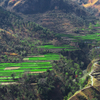
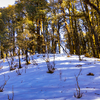
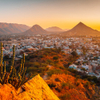



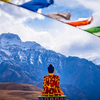
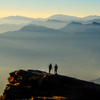

 Call
Call  WhatsApp
WhatsApp  Share
Share